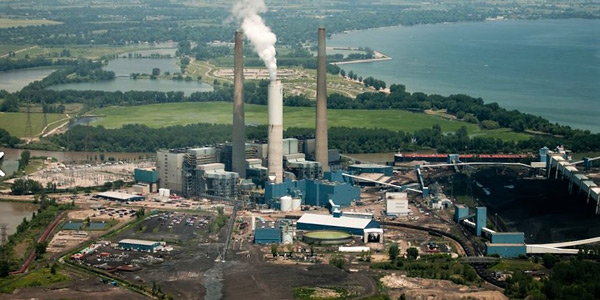By Amanda Durish Cook
The U.S. Supreme Court last week denied DTE Energy’s petition to review an environmental penalty against one of its Michigan coal plants over increased emissions, but the new tone set by the head of EPA will likely diminish the court’s action.
The court on Tuesday declined to hear the Michigan-based utility’s defense of upgrades it performed on its coal-fired Monroe power plant, clearing the way for EPA enforcement action. (See DTE Initiates Last-Ditch Effort in Clean Air Act Case.)
However, the agency has performed an about-face under in the intervening months since DTE filed a writ of certiorari with the court. Administrator Scott Pruitt earlier this month released a policy memo specifically citing DTE’s case and adopting some of its arguments against having to pay penalties for excessive air pollution, making it unlikely the agency will pursue penalties.
EPA and the Sierra Club have pursued enforcement against DTE since 2010, when the company started a $65 million upgrade to Unit 2 of the 46-year-old Monroe coal plant without installing additional pollution controls. They contended the upgrade violated the Clean Air Act’s New Source Review (NSR) program because DTE ignored its own projections that the renovation would cause emissions to increase by thousands of tons per year. EPA called the project a major overhaul that should have included new pollution controls and sought civil penalties of up to $37,500 per day.
DTE maintained that the higher emissions from the Monroe plant were a product of demand growth and not caused by the improvements. By 2014, DTE had installed four selective catalytic reduction units and four flue gas desulfurization units at the plant at a cost of about $2 billion.
“It is pretty simple. DTE chose to overhaul their dirty coal plant and not install modern pollution control technology at that time even though their own projection showed that pollution would increase after the overhaul,” said Regina Strong, director of the Sierra Club’s Beyond Coal Campaign in Michigan.
DTE contended that enforcement action could not proceed until after an actual pollution increase occurred, an argument that the 6th U.S. Circuit Court of Appeals twice rejected (14-2274, 14-2275).
However, Pruitt’s memo aligns with DTE’s arguments, saying that EPA will no longer bring NSR enforcement against generators until they’ve had the chance to increase pollution, contradicting the preventative nature of the NSR that the 6th Circuit recognized.
Pruitt wrote that EPA does not “presently intend to initiate enforcement … unless post-project actual emissions data indicate that a significant emissions increase … did in fact occur.”
According to the Sierra Club, EPA will now “no longer seek to challenge even obviously faulty or fraudulent projections by a utility that a proposed modification to a coal plant will purportedly not lead to a New Source Review-triggering emissions increase so long as such projection was procedurally done properly.”
“The new Pruitt approach appears to be little more than an attempt to give coal utilities a sense of empowerment to ignore the critical public health protections of the Clean Air Act New Source Review program,” Shannon Fisk, managing attorney with environmental law firm Earthjustice, said in a statement. “Such [an] approach should not stand as it is contrary to law, public health and common sense.”





